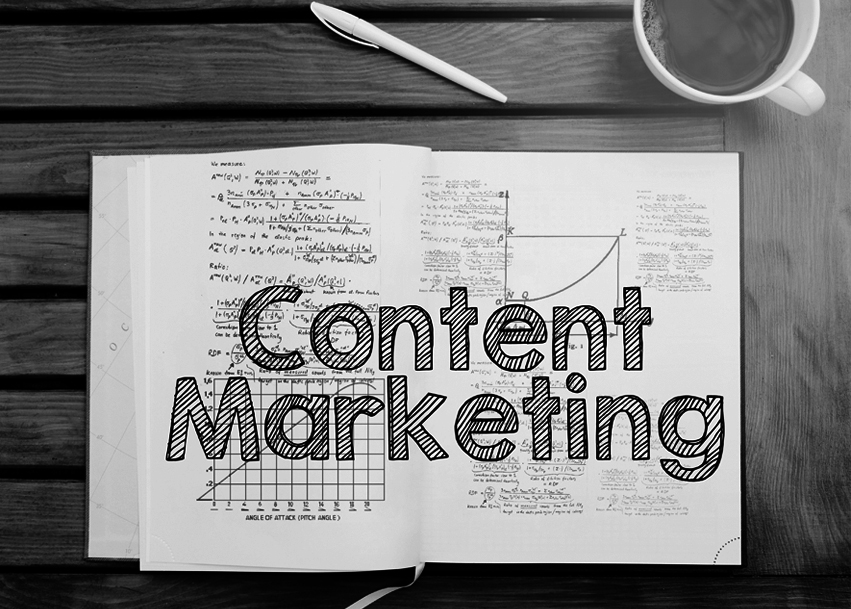Social addictions.
Nothing gets our inspiration flowing like a good, juicy blog post. Read about what we’ve been working on (our latest launches), what we can’t stop thinking about (design trends, industry happenings and new partnerships) and what we think you should know (expert branding insights and probably some stuff about dogs).
Check back often—we’re quite chatty when we want to be.
5 Essential Elements for a Good Content Marketing Strategy

Ahh, content marketing. One of the buzziest of buzz words to hit the industry circa five years ago. Its right up there with ‘ROI,’ ‘value proposition,’ and the King of buzz ‘social.’
… If I had a dollar every time I’ve heard a fellow marketer say, ‘integrate social’ I’d be on a beach somewhere instead of writing this post …
Anyway, now content marketing is an essential (and relatively easy) component in the ever-evolving marketing mix. The beauty of content marketing is that every brand has a story to tell — and instead of paid or earned media — content marketing provides an authentic way to weave a multimedia story that provides industry value and brand personality.
In true Buzzfeed style, here the 5 essential elements to a good content marketing strategy.
1. Know Your Audience
As marketers, we’ve all heard it before, ‘Who’s your target audience?’But seriously, who are they? How old? Do they typically have kids? What’s their level of education? What are there likes and dislikes? The more detailed the better. A good content strategy means knowing who you’re talking to and why they would care about your content.HubSpot is an awesome resource for creating detailed personas. Check out this blog post on the subject complete with a Persona Template.
2. Provide Value
The internet is simultaneously awesome and horrible because of the sheer volume of information. As such, we’ve been trained to constantly scan, search and refine based on our needs and wants.There are also enough remarketing, banner and display ads in our digital lives that we instantly (at least most) discount spammy, over-aggressive advertising.Providing value means giving away free information and helping your users solve a problem. Not selling immediately, but proving good information that your users can use. It has real (or at least perceived) value to them. Check out this blog post by Conversion Champs about providing real value.
3. Understand your conversion
What’s the goal of your content? If someone interacts with it, what would you like them to do? An example of a successful conversion is filling out a landing page form to receive an eBook you’d like them to read.Understanding your conversion is essential to content marketing. Why? Because the action you’d like your users to complete will dictate the content type, or vice versa.Content should be defined by purpose (or intended conversion), format and topic. Once you understand your conversion, pick the content format that will resonate most with your persona (this is why detailed personas are muy importante). The topic is equally important because it will communicate the perceived or intended value you would like to provide.
See, it’s almost like it’s all connected. Radical.
Take a look at this SlideShare deck on the 7 Rules of Conversion-Friendly Content Marketing Design.
4. Analyze and Nimble
One of the biggest gaffes in content marketing is pushing something out into the interwebs and not analyzing its efficacy. Why would you do that? You wouldn’t because you’re smart.It’s like a baker not measuring the ingredients of a cake, throwing it in the oven and wondering why it doesn’t taste good. Well, not exactly … but you get the point.Understanding why a specific piece of content is not performing is less important than knowing it’s not and quickly iterating. Try new things and go out on a limb. Testing different content types to increase conversion rates is part of the game.
The beauty of self-publishing is that the cost of failure is typically just time, effort and ego. Learning from content mistakes could lead you to your next big win, great client or increase in sales.
See the article 7 Tips We Learned Analyzing 75 Content Marketing Examples by the Content Marketing Institute.
5. As with any Product, Distribution is Key
Your new content is beautiful. You’ve worked so hard. Agonized over every word. It’s a valuable piece of sticky content that your customers can’t wait to consume.As a rule of thumb, you should spend just as much time distributing content as you did creating it. It’s important!So, wait – how do you push it out?
That’s a more nuanced answer. The distribution method should be consistent with your personas (and how they prefer to receive content), where they reside in the buyers journey (or funnel) and the intended conversion. It should also align with your editorial calendar and overall content strategy … but that’s blog post or eBook in its own merit.
In general though, here are a few examples of ways to distribute content:
– Webpages;
– Business Blog;
– Landing Pages;
– Social Channels;
– Calls-to-Action;
– Marketing Emails; and
– Display, PPC, SEM Campaigns
For more ideas on how to boost your distribution, read this blog from the competent folks over at Hootsuite.
And don’t be afraid to recycle, segment and increase the shelf life of your content. Like with this post, I could post one essential element a week for 5 weeks … flex that content!
Closing thoughts: Content marketing doesn’t have to be hard, it just needs to be constant. Empower everyone at your company to create, to provide value and unleash the storyteller within. If everyone did this, we’d all win!
Oblique is full-service Boulder creative agency serving Colorado and beyond. We help our clients achieve their business objectives by creating well-designed and effective communications. We do this through smart thinking, impeccable craft and client relationships based on high levels of trust and respect. Our team of talented and passionate individuals work together to create consistently great results.
